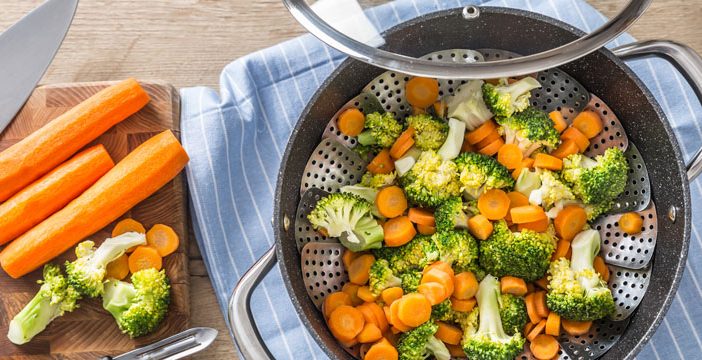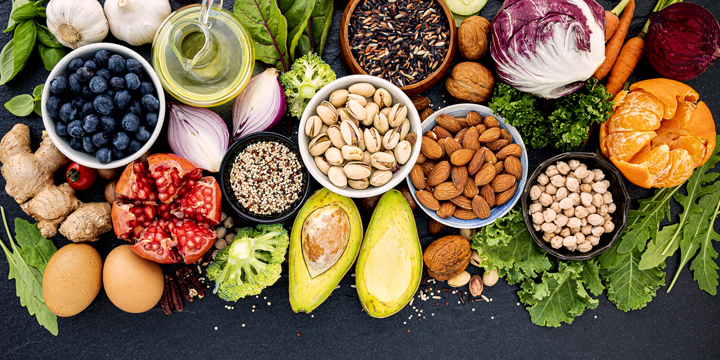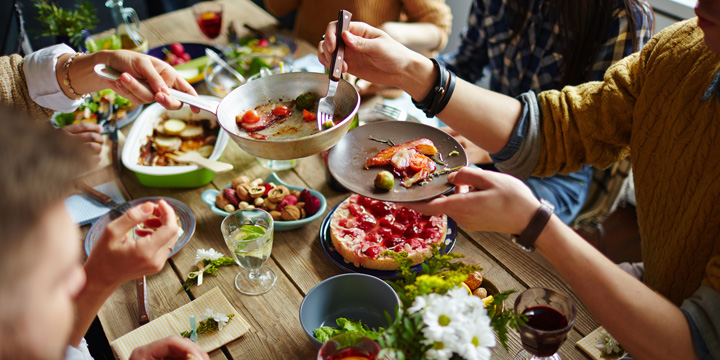
When you live with diabetes, preparing healthy meals can be a challenge. Learning about cooking and the glycemic index can keep you on track. How you cook your food can influence its impact on your blood sugar levels. The choices you make in the kitchen – from frying to steaming to grilling – can affect your health.
What is the glycemic index and why does it matter for people with diabetes?
The glycemic index (GI) was developed in Canada by University of Toronto researchers in the 1980s. The index ranks food and beverages containing carbohydrates based on how quickly they will raise your blood sugar, and by how much.
The system is designed to help people with diabetes make better food choices, but it can help everyone eat healthier. The index is based on a scale from zero to 100. Items classified as lower on the scale (low GI) have less impact on blood sugar and should be included more often in meals.
There are many benefits to low-glycemic diets, including better diabetes management, less hunger, and improved cholesterol levels. Food and drinks with a high GI – greater than 70 – raise blood sugar levels very quickly and can lead to over-eating and other health issues. It doesn’t mean you should eliminate high-GI foods altogether but try to limit them.
How does cooking affect the glycemic index of foods?
Cooking can alter a food’s structure and chemistry, changing how it is digested. While some cooking methods have little to no impact on your blood sugar, other ways of cooking can lead to blood sugar spikes.
What are the best ways to cook food for better blood sugar control?
When it comes to cooking methods, steaming and boiling are your best choices. Steaming helps maintain a food’s natural structure and glucose is absorbed more slowly when you consume it. Boiling also offers a gentler way of cooking which does not generally cause blood sugar spikes.
Before you turn on your barbecue, you should know that high-heat cooking can impact your blood sugar levels. Using high heat to cook foods – grilling, frying or using the oven — breaks down carbs more quickly. This leads to a faster integration of glucose into the bloodstream.
Researchers have found a unique way to reduce the impact of high-GI foods like white rice, potatoes and pasta. You can cook them, let them cool, and either eat them cold (potato salad, pasta salad, etc.) or reheat them. This process increases resistant starch, slowing down glucose absorption, and lowering the impact on blood sugar.
How does cooking time or level of doneness impact the GI?
As a general rule, uncooked items will have a lower GI than cooked food. That is because cooking increases a food’s glycemic index by breaking down the food’s natural structure. This makes them easier to digest and moves glucose into the bloodstream more quickly.
Be cautious about overcooking carbohydrate-rich meals, as this can raise a food’s GI even further. Take the example of pasta. Pasta that is overcooked will raise your blood sugar levels much faster than pasta prepared al dente, where it is not cooked as long, and is tender but still firm.
Which foods are most impacted by the cooking method?
Cooking tends to have the biggest impact on foods that are high in starches. Some examples of these are white potatoes, white rice, white pasta, corn, and yams. The reason for this, is that cooking makes the carbohydrate content of these foods easier to digest, increasing their GI.
What are some practical tips to follow for a low-GI diet?
When you have diabetes, it is not always easy to stay on-course and stick with meals that won’t cause a spike in blood sugar. Here are some tips:
- Try to eat more whole grains, vegetables and fruits.
- Stick with smaller portions of white rice, white bread and potatoes during meals.
- Try to eat your pasta al dente.
- For starchy foods, try cooking and cooling, then reheating later to slow down the absorption of glucose.
The glycemic index is a useful guide for people living with diabetes. It identifies ways to eat and drink for better blood sugar control and weight management. Remember that the GI of a food can change, depending on how you cook it.




